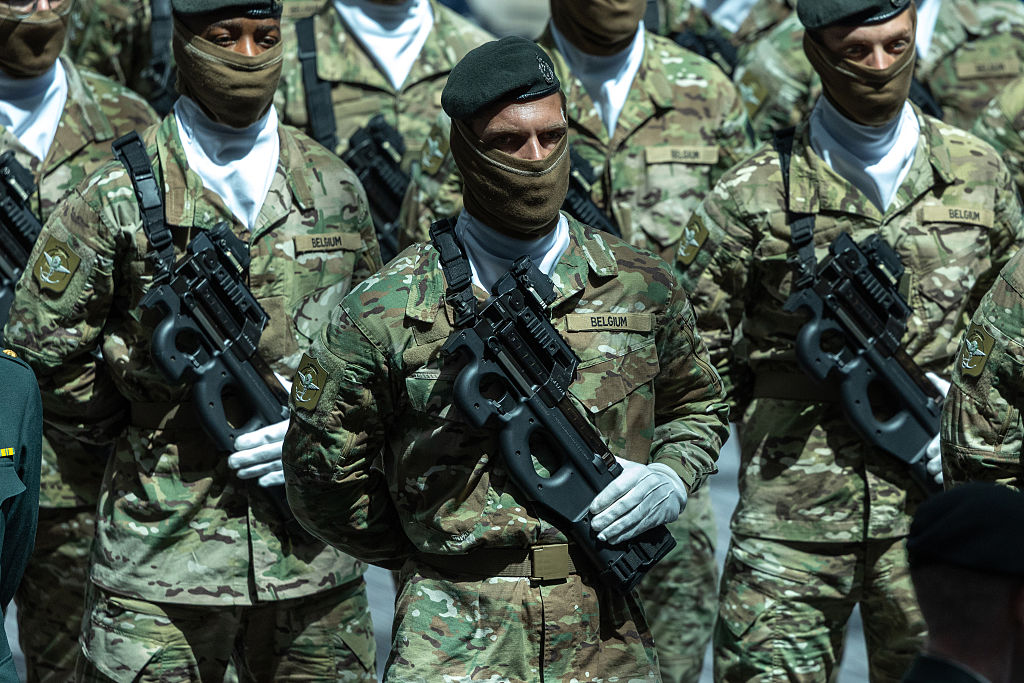Unidentified drones have been reported over key sites in Germany and Belgium.
The sightings have prompted investigations and raised alarm about vulnerabilities in European critical infrastructure and potential espionage amid heightened European security tensions.
The incidents, occurring in the early hours today, followed a pattern of similar sightings across NATO countries. Authorities are probing possible links to foreign actors, particularly Russia, although no definitive origins have been confirmed.
In Germany, Munich Airport, one of Europe’s busiest aviation hubs, suspended operations for nearly seven hours overnight after multiple drone sightings were reported from 10:18 pm local time yesterday.
The closure led to the cancellation of 17 flights and the diversion of 15 others to nearby airports, including Stuttgart, Nuremberg, Vienna and Frankfurt, stranding approximately 3,000 passengers.
Airport authorities provided camp beds, blankets, drinks, and snacks to those affected, with flights resuming early today ahead of German Reunification Day.
Police and air traffic control could not identify the drones’ size or type but the incident disrupted travel during the final days of Munich’s Oktoberfest festival, which had already faced a separate bomb threat.
Across the border in eastern Belgium, around 15 drones were observed flying over the Elsenborn military training area, a NATO base in Liège province near the German frontier, at approximately 1:45 am local time this morning.
Belgian defence minister Theo Francken confirmed the intrusion, with the military launching an investigation into the drones’ origins and operators.
Local police from the nearby German city of Düren first spotted them leaving the Belgian site’s airspace into German airspace.
Experts note that while Elsenborn is a training ground rather than a high-value espionage target, the co-ordinated nature of the flight underscores vulnerabilities in detection and response systems for small, unmanned aerial vehicles.
These events build on a surge of drone activity across Europe in recent weeks.
In Germany, earlier sightings in northern states including Schleswig-Holstein and Mecklenburg-Western Pomerania targeted shipyards, power plants, hospitals, military bases such as Sanitz, and ports including Rostock, often in swarms suggesting reconnaissance.
Similar disruptions have affected airports in Denmark and Norway, with NATO enhancing vigilance in the Baltic Sea region through initiatives like its Eastern Sentry Mission.
Speculation has pointed to Russia as a possible culprit, given ongoing hybrid threats linked to the Ukraine conflict, although Moscow denies involvement.
Russian President Vladimir Putin even joked about the Danish incidents and indicated they could be false-flag operations in a ruse to push up defence budgets.
European leaders, including those at recent EU summits, have discussed bolstering defences, such as a proposed “drone wall” along eastern borders.
Germany is accelerating legislation to empower the Bundeswehr armed forces to shoot down suspicious drones near critical sites, addressing gaps in current radar evasion and detection technologies.
Belgium’s probe into the Elsenborn event emphasises the need for advanced counter-drone systems, as small UAVs often go undetected until visually spotted.
NATO allies are sharing anti-drone capabilities, including radar and acoustic detection, to counter what officials describe as a growing challenge to airspace security.
Danish forces deployed a XENTA C-UAS radar system to Copenhagen airport after recent drone incursions. pic.twitter.com/0DbGeTosBO
— OSINTtechnical (@Osinttechnical) September 27, 2025





